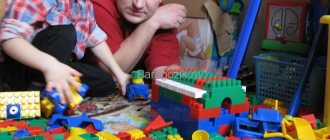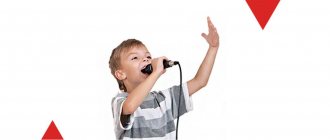Beautiful speech with movement
From childhood, most parents teach their children to follow certain rules of good manners that are directly related to speech. First of all, from a very young age it is forbidden to talk at the table with your mouth full, especially since this is quite dangerous due to the possibility of choking on food. There is also a ban on the use of various common “street” word forms in speech, which can indicate the lack of education of each person. Getting rid of talk is one of the most important tasks, according to many parents. All these rules of good manners were invented not out of a desire to limit human development, but because a well-mannered person is able to have a positive impact on society and this very society will certainly accept him. In addition to the generally accepted rules of good manners, there are also quite unambiguous ones that limit speech while moving, because talking while running cannot bring any benefit not from communication, and sports activities will be disrupted.
No person running and talking at the same time is able to concentrate either on the exercise or on the topic of conversation. Speech and movement are incompatible.
Each person talks while driving, some on a mobile phone, and some with his companion. But such communication cannot be called constructive, due to the fact that all important decisions are made not in the course of fleeting words while driving, but in the appropriate environment in offices or at the workplace.
The child does not speak or speaks poorly. Each family has a different attitude towards this phenomenon. Some are alarmed by the fact that by the age of one year the baby speaks only two or three words.
Others are calm, despite the fact that a three-year-old child cannot form the simplest phrase and knows only a small number of everyday words. Such parents believe that over time their child will catch up with his peers and speak on his own. And they are very wrong.
Most often, delayed speech development has a serious impact on the child’s overall development, does not allow him to fully communicate and play with peers, makes it difficult to understand the world around him, and aggravates the child’s emotional and mental state.
However, if you help your child in time to constantly use all methods of development and speech activation, these serious problems can be successfully solved.
In a normally developing child, the first words appear at 8-9 months. If after 1 year and 2 months - 1 year and 3 months the child does not utter a single word, you need to sound the alarm.
After one and a half years, the child normally develops two-word sentences: “Mom, give me; Dad, beep."
The number of words by the end of the second year of life ranges from 100 to 300.
By the end of the third year of life, vocabulary increases 3-4 times. Verbose sentences appear. The child is able to recite a short fairy tale almost by heart, read to him several times. At three years old, a child can correctly pronounce most sounds in speech.
It is necessary to take care of the timely development of a child’s speech from the first weeks of his life: develop his hearing, attention, talk, play with him, develop his motor skills.
The higher the child’s motor activity, the better his speech develops. The relationship between general and speech motor skills has been studied and confirmed by the research of many major scientists, such as I.P. Pavlov, A.A. Leontiev, A.R. Luria. When a child masters motor skills and abilities, coordination of movements develops.
The formation of movements occurs with the participation of speech. Precise, dynamic execution of exercises for the legs, torso, arms, and head prepares for the improvement of the movements of articular organs: lips, tongue, lower jaw, etc.
The development of fine movements of the fingers is especially closely related to the development of speech. Why does a person who cannot find the right word to explain often help himself with gestures? And vice versa: why does a child, writing or drawing with concentration, help himself by involuntarily sticking out his tongue?
Scientists have come to the conclusion that the formation of a child’s oral speech begins when the movements of the fingers reach sufficient accuracy. In other words, speech formation occurs under the influence of impulses coming from the hands. This is important for timely speech development, and especially in cases where this development is impaired.
In addition, it has been proven that both the thought and the child’s eye move at the same speed as the hand. This means that systematic exercises to train finger movements are a powerful means of increasing brain performance.
Research results show that the level of speech development in children is always directly dependent on the degree of development of fine movements of the fingers. Imperfect fine motor coordination of the hands and fingers makes it difficult to master writing and a number of other educational and work skills. Psychologists say that finger exercises develop a child’s mental activity, memory and attention.
II. Introducing various types of games and exercises aimed at correcting speech disorders using gross and fine motor skills.
1. Finger exercises.
The ability to freely and naturally use the movements of your fingers is developed through special exercises. Through simple exercises that are easy to understand and perform, children learn to subtly perform voluntary finger movements.
Finger exercises include:
- exercises for massage (pinching, pressing, patting, tapping, etc.) - exercises with objects (expander, clothespins, hedgehogs, corks, polka dots, balls, beads, handkerchiefs, counting sticks, etc.) - exercises without objects.
2. Ball exercises.
Ball games have been known since ancient times, although history does not know exactly where or when these games were born.
Almost every child is familiar with the ball from an early age. Ball games are very popular, they are found in almost all peoples of the world and it is no coincidence that they are considered the most common of games.
In Russia, ball games have also been known for a long time. In the common people, balls were most often made from rags and stuffed with rags. In the northern provinces, balls were woven from bast - straps made from the bark of birch, linden or willow. Such balls were empty inside or filled with sand. In some areas, balls were made from sheep's wool. A clump of wool was first rolled until the ball became dense, after which it was thrown into boiling water. Then it was taken out of the water, rolled again and dried. Such a ball was light and soft, and in its elasticity was not inferior to a rubber one. Only children from rich families could afford real rubber balls.
Now any child has the opportunity to play with the ball. And their choice is quite wide: balls of various colors, sizes, qualities are available for sale - for every taste. As a rule, children are most attracted to bright, bouncy, and light balls. However, surveys of parents over the past three years have shown that little attention is paid to ball games. Not all children have balls at home, and even in the summer, on vacation, the ball remains undeservedly forgotten.
Parents don’t even know how to play with a ball, so they can’t teach them to their children. Of the many existing games, most parents named football.
Types of ball games:
— games to develop spatial orientation. Children with speech pathology are characterized by impaired spatial perception, which creates significant difficulties in orientation in space, and subsequently leads to dysgraphia. The proposed exercises with the ball are aimed at developing strength, accuracy of movement, and the ability to identify oneself and an object in a spatial field. For this, rubber, tennis and fabric balls are used.
— ball games aimed at developing sound pronunciation and the development of phonemic processes. Vowel sounds are the foundation on which all work on the development of phonemic processes in children is based. Having mastered this topic, children, as a rule, master sound analysis and synthesis of words well, and therefore, in the future, it is easier to assimilate material on learning to read and write. All work on vowel sounds is reinforced in ball games.
— ball games aimed at generalizing and expanding vocabulary and developing the grammatical structure of speech (consolidating general words, enriching the vocabulary, word formation, pluralizing nouns, using prepositions, TRIZ elements).
3. Playing out children's songs (“There was a birch tree in the field,” “Teddy Bear,” “Teapot with a lid,” etc.) (Music from Burenina’s program “Rhythmoplasty” is used)
III. Application of acquired skills in a family setting. (game modeling method)
REMINDER FOR PARENTS
1. Finger exercises
- exercises for massage or self-massage (pinching, pressing, patting, tapping, etc.)
- exercises with objects (expander, clothespins, hedgehogs, corks, peas, balls, beads, handkerchiefs, counting sticks, twigs, lollipop sticks, candy wrappers, semolina, flour, coffee, cream, scrub, paper clips, walnuts, hazelnuts, etc.)
- exercises without objects, for example:
Finger gymnastics “Squirrel”.
A squirrel sits on a cart, (Claps palms and hits each other with fists alternately.) She sells nuts. To the little fox-sister, to the sparrow, to the titmouse, to the thick-fingered bear, to the mustachioed bunny. (Fold your fingers, starting with the thumb.) Some in a scarf, some in a goiter, some in a sweetie. (Rhythmic clapping of palms and banging fists against each other.)
2. Ball exercises.
— games to develop orientation in space: “Throw the ball left, right”; “Throw the ball to your neighbor on the left, on the right”; “Throw the ball forward, backward”; “Roll the ball around you,” etc.
— ball games aimed at developing sound pronunciation and the development of phonemic processes: “Hit the ball with your palm when you hear the sound A”; “As many sounds as I name, throw the ball on the floor so many times”; “Catch the ball - say the word”, etc.
— ball games aimed at generalizing and expanding vocabulary and developing the grammatical structure of speech (consolidating generalizing words, enriching the vocabulary, word formation, pluralizing nouns, using prepositions): “I know three names of animals”; “Say kindly”; “Who does what”; "What is it made of"; “The third wheel”, etc.
3. Playing out children's songs (“There was a birch tree in the field”, “Bear”, “Song of the crocodile Gena”, etc.)
Breath control
Yes, there are professions in which it is simply impossible to do without speech in movement, and this is primarily due to the need to inform colleagues or the public while performing certain actions related to movement. For such people, the impact of words is very important. In these cases, it is necessary to develop the respiratory functions of your body. After all, speech and movement require rhythm, and this can only be achieved with a developed respiratory system, which is able to provide oxygen to the muscles that require energy during movement, and at the same time allows you to pronounce deliberate words at the same rhythm.
Anyone can achieve a monotonous rhythm of conversation while performing a motor function, but they must be in fairly good physical shape and be able to control their breathing.
Indeed, when the rhythm of the respiratory system fails, both the rhythm of speech and the work of internal organs, which are directly related to the volume of oxygen entering the blood, are disrupted.
Indeed, almost every person notices how difficult it is to maintain the rhythm of speech when walking or running quickly, and there are people who find it difficult to speak even during a short walk.
The connection between movement and speech
The connection between movement and speech is a well-known fact that is beyond doubt. Moreover, speech, in its essence, is also a movement of the muscles of the organs of articulation and vocal cords. That is why the task of learning to coordinate speech with movement is not so difficult and comes down to developing stable skills in the coordinated work of different muscle groups.
There are many ways to achieve clear coordination of speech and movement. And the most famous and effective of them is the game. Games are the predominant method of developing the ability to coordinate speech with movement for preschoolers and children of primary school age. We all probably remember children's games in which we made specified movements and at the same time recited simple rhymes in chorus (“Bear the bear in the forest,” “Geese-geese, ha-ha-ha,” etc.). Such games, it turns out, are not only exciting fun for kids, but also help them gain basic skills in coordinating speech and movement. Games are quite often used for learning. They are liberating; with their help it is easy to explain what cannot be expressed in words. Thus, the use of games for teaching acting is widespread.
Various exercises are also used to form and automate the relevant skills. For example, jumping rope at different paces while simultaneously reciting a rhyme or tongue twister. This exercise allows you to practice speech breathing in a state of physical activity. There are exercises aimed at the ability to coordinate the tempo of speech and movement, voice strength and other speech-motor aspects.
MOVEMENT AND SPEECH - DIRECT COMMUNICATION: ADVICE OF A Speech Pathologist
Movement is one of the innate human needs. Her satisfaction is very important in childhood. This age creates the most favorable conditions for the comprehensive development of the child. During this period, called SENSITIVE, all the main aspects of the psyche are formed - thinking, memory, attention, motor skills. The intellect and its social component—speech—are also actively developing.
“Walking and movement promote brain play and thought.”
Jean-Jacques Rousseau
The brain develops along with the body. At an early age, mental development, including speech, goes in parallel with physical and sensory development. A preschooler learns about the world, masters speech, and understands the spatiotemporal connections of objects and phenomena with the help of movements. The role of mobile exercises for the formation of fine motor skills, reaction speed, coordination of movements, memory, perception, activity of the auditory and visual analyzers is invaluable.
Lack of development of gross motor skills (movements of the arms, legs, torso) manifests itself in the form of poor coordination of body parts when performing complex movements, their lack of accuracy and dexterity, and pronounced difficulties when performing physical exercises by demonstration or verbal instructions. Often it is enough to observe how children know how to dress and undress, how they fasten and unfasten buttons, tie and untie shoelaces, all this allows us to see insufficient coordination of the fingers - imperfection of fine motor skills. Deficiencies in the development of facial and articulatory motor skills are manifested in inexpressive facial expressions, difficulties or complete impossibility of pronouncing certain sounds, and general vagueness, indistinctness, and blurred speech.
IN CONDITIONS OF SELF-ISOLATION, DIFFICULTIES MAY ARISE IN CHOOSING FUN AND SUITABLE PHYSICAL ACTIVITY FOR A CHILD. WHILE AT HOME, YOU CAN, FOR EXAMPLE:
- Find sports or dance video lessons, practice and dance together, with the whole family;
- Do breathing exercises. Our speech is carried out thanks to the clear and correct work of all organs taking part in the speech act; as we have already said, an important part of speech is breathing. While performing breathing exercises, hand movements are coordinated with the chest breathing movements, correct nasal breathing is trained, and the orbicularis oris muscle is strengthened. The following exercises, performed no more than 3-5 minutes at a time, will be useful:
“Blow out the stubborn candle” - hold colored strips of paper in your right hand; place your left palm on your stomach; inhale through your mouth, inflate your stomach; then exhale for a long time, “put out the candle”;
“Steam locomotive” - walk around the room, imitating the movements of the wheels of a steam locomotive with bent arms, while pronouncing “choo-choo” and changing the speed of movement, volume and frequency of pronunciation;
“Shepherd boy” - blow your nose into a small pipe as loudly as possible to call the cows scattered in different directions; show the child that it is necessary to inhale through the nose and exhale sharply into the pipe;
“Geese are flying” - walk slowly and smoothly around the room, flapping your arms like geese; Raise your wing arms as you inhale, lower them as you exhale, saying “gu-oo-oo” (8 – 10 times);
“Hunting” - close your eyes, determine by smell what kind of object is in front of the child (orange, perfume, jam, etc.);
“Roll a pencil” - inhale through your nose and, exhaling through your mouth, roll a round pencil along the table.
Now is a great time to involve children in everyday household chores that are appropriate to their age, such as setting the table, putting away toys, tidying up the room, caring for flowers.
- Play physical activity games at home:
Lay out a straight line of newspapers on the floor. Show the path to the baby and say: “You can walk along this long path.” Show how to walk along the path using both hands to maintain balance. Ask your child to follow you along this path. If he doesn't understand, take his hands and lead him. But in this case, you will need the help of another person, whom you both will follow. If your child is good at this task, make the path more intricately shaped, with curves, or leading from room to room;
- If there are several preschoolers in the family, offer them games with a ball to develop correct sound pronunciation and speech perception:
- “We repeat the sound together” - when you hear the sound A, hit the ball on the floor;
- “The ears will hear the vowel sound - the ball flies over the top of the head” - you will hear the sound A, throw the ball up.
Of course, physical activity in the fresh air gives children more positive emotions and interest, especially in warm weather. What can you do after the period of self-isolation ends?
- Bury a treasure in the forest (a couple of colored pieces of glass), make a map with coordinates (level: “10 steps from an old snag towards the river”), age the map and take the child to search for the treasure. He will remember this adventure for the rest of his life;
- go mushroom picking together;
- walking the dog;
- jumping rope;
- play geo-hide and seek or use permanent mobile orienteering trails;
- sometimes use the stairs with your children instead of the elevator according to their capabilities;
- sing when you walk;
- fly a kite;
- Drawings on asphalt. For example, draw hopscotches for jumping or different paths that allow your child to run on them without stepping over the edges.
Motor activity and physical activity from an early age have a positive effect on speech development and mental processes. By involving the child in active games at home or on the street, parents help him systematically and timely master his native language and speech.
Text: Anna Reshetnikova, teacher-speech therapist of school No. 1811, special psychologist (MPGU)






